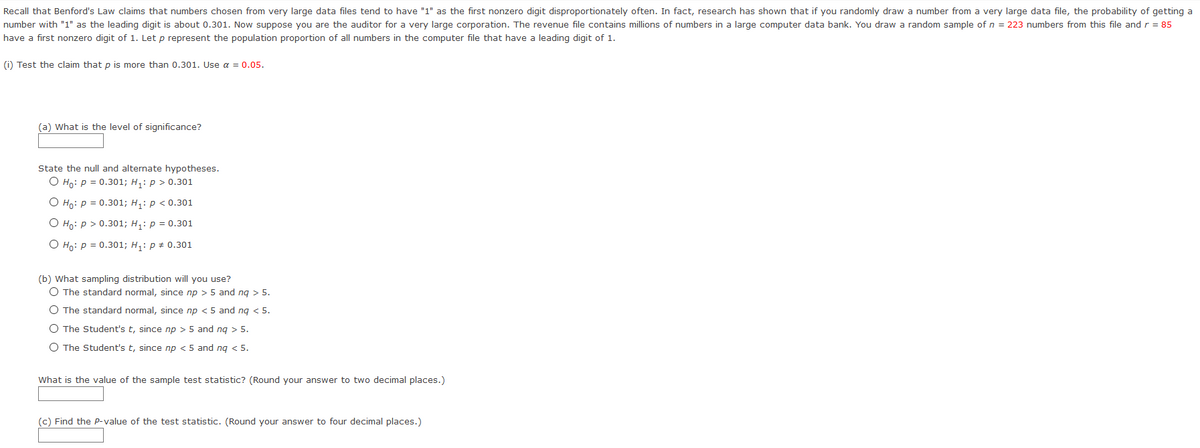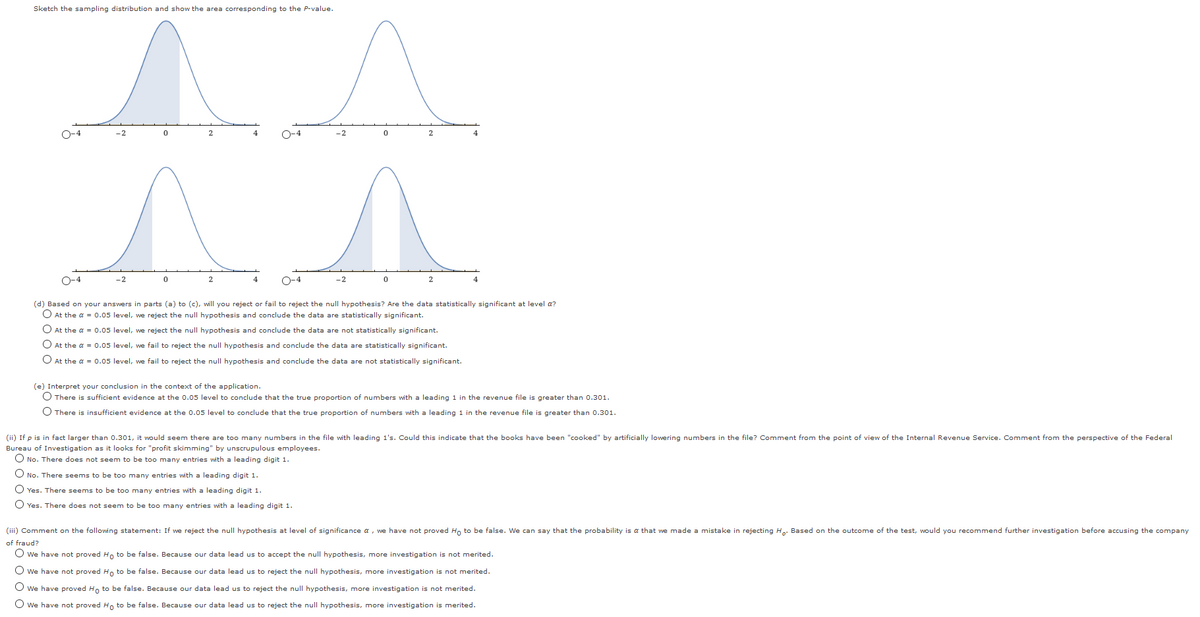()if pis in fact larger than 0.301, t would seem there are too many numbers in the file with leading 1's. Could this indicate that the books have been "cooked" by artificially lowering numbers in the file? Comment from the point of view of the Internal Revenue Service. Comment from the perspective of the Federal Bureau of Investigation as it looks for "profit skimming" by unscrupulous employees. O No. There does not seem to be too many entries wth a leading digit 1. O No. There seems to be too many entries wth a leading digit 1. O ves. There seems to be too many entries wth a leading digit 1. O Yes. There dees not seem to be too many entries with a leading digit 1. () Comment on the following statementi If we reject the null hypothesis at level of significance a, we have not proved Ho to be false. We can say that the probability is a that we made a mistake in rejecting He Based on the outcome of the test, would you recommend further investigation before accusing the company of fraud O we have not proved Ho to be false. Because our data lead us to accept the null hypothesis. more investigation is not merited. O we have not proved Ho to be false. Because our data lead us to reject the null hypothesis, more investigation is not merited. O we have proved Ho to be false. Because our data lead us to reject the null hypothesis, more investigation is not merited. O we have not proved Ho to be false. Because our data lead us to reject the null hypothesis, more investigation is merited.
Recall that Benford's Law claims that numbers chosen from very large data files tend to have "1" as the first nonzero digit disproportionately often. In fact, research has shown that if you randomly draw a number from a very large data file, the probability of getting a number with "1" as the leading digit is about 0.301. Now suppose you are the auditor for a very large corporation. The revenue file contains millions of numbers in a large computer data bank. You draw a random sample of n = 223 numbers from this file and r = 85 have a first nonzero digit of 1. Let p represent the population proportion of all numbers in the computer file that have a leading digit of 1.
i need help with (ii) and (iii)


Trending now
This is a popular solution!
Step by step
Solved in 2 steps




